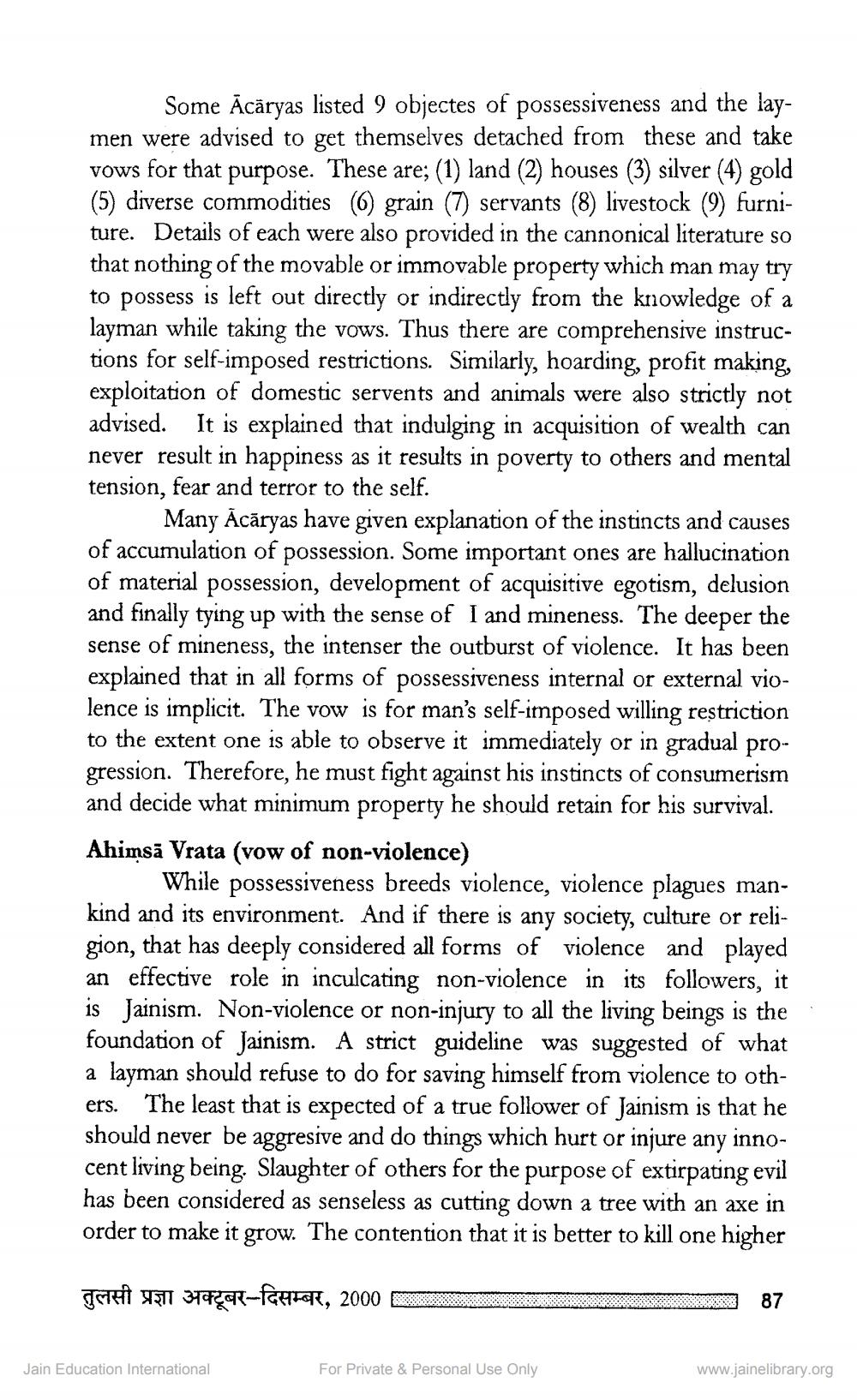________________
Some Acāryas listed 9 objectes of possessiveness and the laymen were advised to get themselves detached from these and take vows for that purpose. These are; (1) land (2) houses (3) silver (4) gold (5) diverse commodities (6) grain (7) servants (8) livestock (9) furniture. Details of each were also provided in the cannonical literature so that nothing of the movable or immovable property which man may try to possess is left out directly or indirectly from the knowledge of a layman while taking the vows. Thus there are comprehensive instructions for self-imposed restrictions. Similarly, hoarding, profit making, exploitation of domestic servents and animals were also strictly not advised. It is explained that indulging in acquisition of wealth can never result in happiness as it results in poverty to others and mental tension, fear and terror to the self.
Many Acāryas have given explanation of the instincts and causes of accumulation of possession. Some important ones are hallucination of material possession, development of acquisitive egotism, delusion and finally tying up with the sense of I and mineness. The deeper the sense of mineness, the intenser the outburst of violence. It has been explained that in all forms of possessiveness internal or external violence is implicit. The vow is for man's self-imposed willing restriction to the extent one is able to observe it immediately or in gradual progression. Therefore, he must fight against his instincts of consumerism and decide what minimum property he should retain for his survival. Ahimsa Vrata (vow of non-violence)
While possessiveness breeds violence, violence plagues mankind and its environment. And if there is any society, culture or religion, that has deeply considered all forms of violence and played an effective role in inculcating non-violence in its followers, it is Jainism. Non-violence or non-injury to all the living beings is the foundation of Jainism. A strict guideline was suggested of what a layman should refuse to do for saving himself from violence to others. The least that is expected of a true follower of Jainism is that he should never be aggresive and do things which hurt or injure any innocent living being. Slaughter of others for the purpose of extirpating evil has been considered as senseless as cutting down a tree with an axe in order to make it grow. The contention that it is better to kill one higher
तुलसी प्रज्ञा अक्टूबर-दिसम्बर, 2000
Jain Education International
For Private & Personal Use Only
87
www.jainelibrary.org




